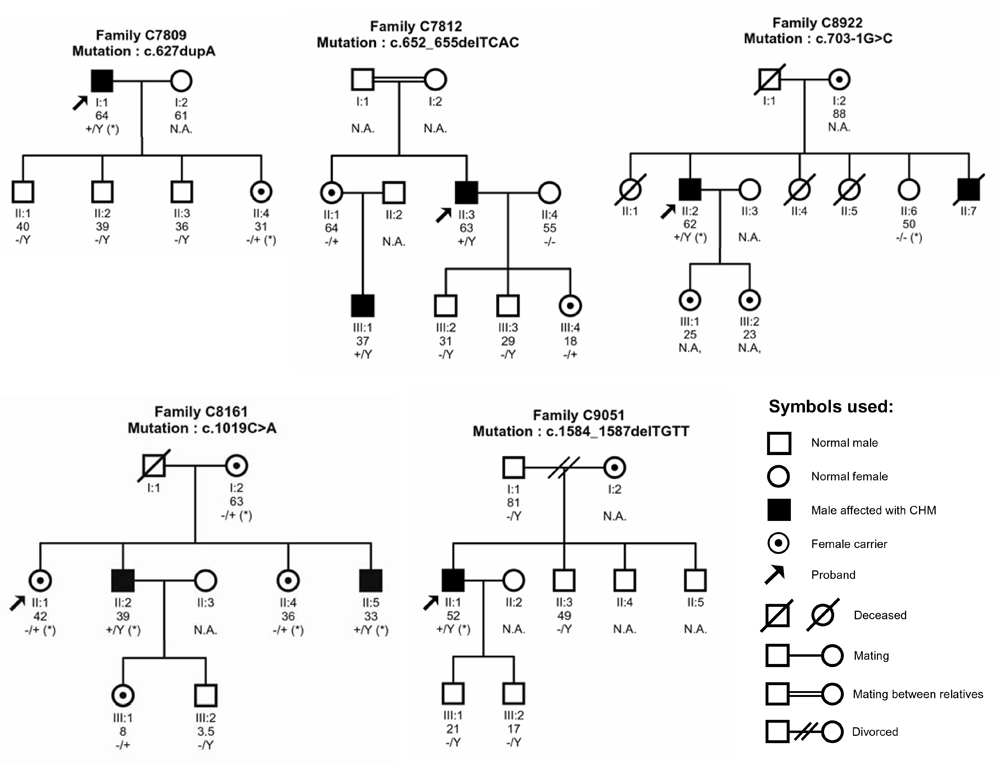![]() Figure 2 of
Yip, Mol Vis 2007;
13:2183-2193.
Figure 2 of
Yip, Mol Vis 2007;
13:2183-2193.
Figure 2. Five Chinese pedigrees with choroideremia
The family code and the corresponding CHM mutation identified in the family are indicated above each family tree. Under the symbol (square or circle) of each subject are three rows of information: individual identifier (I:1, I:2, etc) in the first row, age of the subject when first recruited into the study in the second row, and the genotype for the CHM mutation identified in the family in the third row. Age is not given if the subject has died or did not participate in the study for any reasons (e.g. living outside Hong Kong, divorced from the spouse, as with I:2 in family C9051, etc). Minus sign (-) indicates the absence of the respective mutation, and plus sign (+) denotes the presence of the mutation. For males, the Y chromosome is also indicated for the sake of completeness: -/Y is a normal male, and +/Y is a hemizygous male affected by CHM. For females, -/- is a wildtype (normal) female and -/+ is a heterozygous carrier. Asterisk next to the genotype indicates that a second blood sample was also collected for cDNA sequencing, protein truncation test, and direct immunoblot analysis. N.A. means no blood sample was collected for investigation. For family C8922, the affected proband (II:2) was expected to have inherited the mutation from his mother (I:2), and transmitted to his two daughters (III:1 and III:2) on the basis of classical Mendelian inheritance, although DNA samples were not available for testing for these three females. The same situation was also found in family C9051: the affected proband (II:1) was expected to have inherited the mutation from his mother (I:2). These four female subjects were, by definition, obligate heterozygous carriers.
